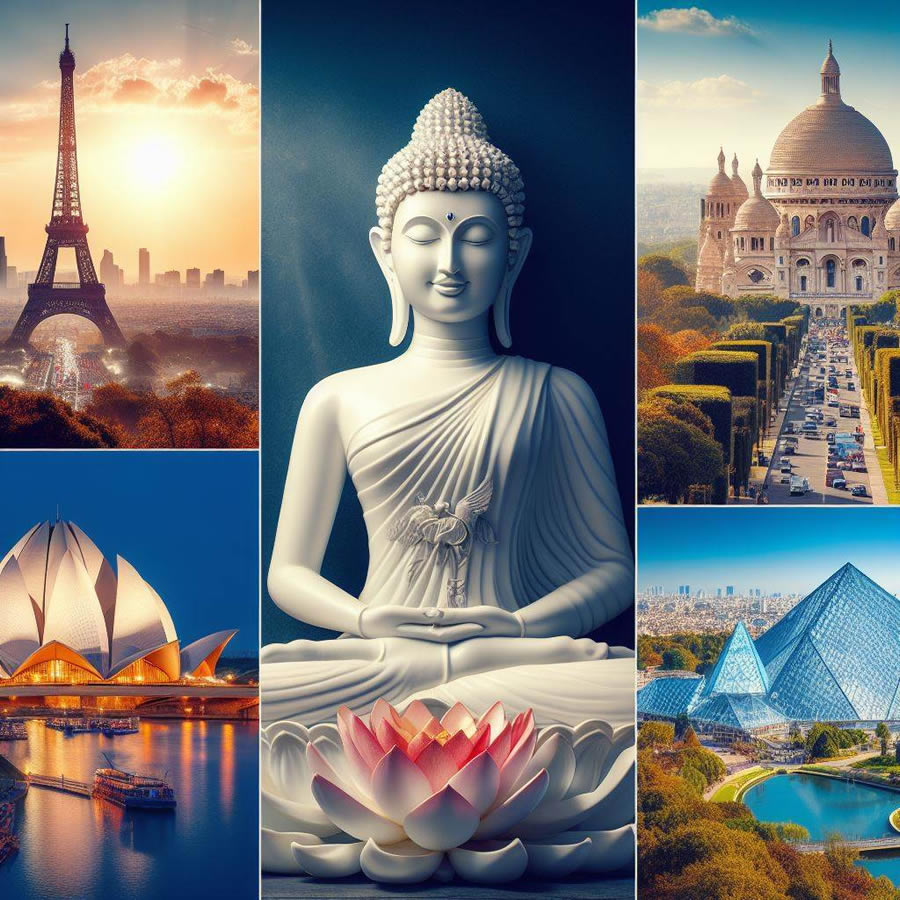Introduction: Unveiling the Magnificence of Famous Pavilions
Pavilions stand as testaments to human ingenuity, blending artistry with functionality to create awe-inspiring architectural marvels. From grand exhibitions to serene retreats, pavilions around the world captivate hearts and minds with their unique designs and cultural significance. Join us on a journey as we explore some of the most famous pavilions across the globe, each offering a glimpse into the rich tapestry of architectural heritage and innovation.

The Crystal Palace, London, UK
Our journey begins in London, where the Crystal Palace once stood as a symbol of Victorian-era innovation and grandeur. Designed by Joseph Paxton, this iconic glass and iron structure housed the Great Exhibition of 1851, showcasing the industrial and technological achievements of the time. Its vast interior space and innovative construction techniques set new standards for pavilion design, inspiring generations of architects and engineers.
The Eiffel Tower Pavilion, Paris, France
No exploration of famous pavilions would be complete without mentioning the Eiffel Tower Pavilion in Paris. While the Eiffel Tower itself is a marvel of engineering, its base pavilion adds to its allure with its intricate ironwork and elegant design. Originally built as an entrance to the 1889 World's Fair, the pavilion now serves as a gateway to one of the world's most iconic landmarks, welcoming millions of visitors each year to experience its breathtaking views of the city.
The Lotus Temple, New Delhi, India
Moving across continents, we arrive in New Delhi, where the Lotus Temple stands as a symbol of unity and peace. Designed by Iranian architect Fariborz Sahba, this striking white marble structure takes the form of a lotus flower, with its petals unfolding to welcome visitors from all walks of life. As a Bahá'í House of Worship, the Lotus Temple serves as a place of meditation and reflection, embodying the principles of harmony and inclusivity.
The Sydney Opera House, Sydney, Australia
In Sydney, Australia, the Sydney Opera House stands as an architectural masterpiece and cultural icon. Designed by Danish architect Jørn Utzon, this sculptural pavilion is renowned for its distinctive sail-like roof and stunning waterfront location. Home to world-class performances and events, the Sydney Opera House is not only a symbol of artistic excellence but also a beacon of creativity and innovation.
The Pavilion of the Three Moons, Beijing, China
Our journey concludes in Beijing, where the Pavilion of the Three Moons awaits. Situated within the iconic Summer Palace complex, this ornate pavilion is steeped in history and symbolism. Its intricate wooden architecture and serene lakeside setting evoke a sense of tranquillity and elegance, reflecting the cultural richness of imperial China.
Conclusion: A Tapestry of Architectural Diversity
In conclusion, the world's famous pavilions are not merely structures; they are living testaments to human creativity, innovation, and cultural heritage. From the grandeur of London's Crystal Palace to the serenity of Beijing's Pavilion of the Three Moons, each pavilion weaves a unique story of architectural brilliance and cultural significance. As we marvel at these iconic structures, let us celebrate the diversity of architectural styles and the enduring legacy of pavilions as symbols of human achievement and ingenuity.
Author - Martin Corby
Posted - 15 Feb 2024
Disclaimer: This information is subject to change and as such, is provided for informational purposes only and does not constitute professional advice. Readers are encouraged to verify the details independently.
© Copyright 2001 - 2024 Garden Adventure Ltd